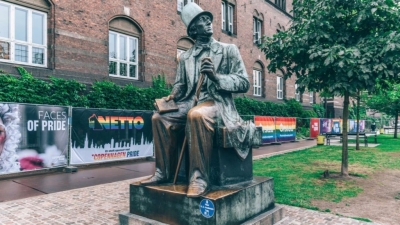
From “The Little Mermaid” and The Ugly Duckling” to “The Emperor and his New Clothes and “The Steadfast Tin Soldier, fairytales written by Danish author Hans Christian Andersen have been our childhood companions. But did you know that Andersen’s life too was no less than a fairy tale? Read on to know more…
Early life
Born in 1805 in Odense, Denmark, Andersen came from an extremely poor family. His father worked as a shoemaker and mother was a washerwoman. Thanks to his father, Andersen had a rich imagination and a love for storytelling. Tragedy struck when Andersen lost his father at the age of 11.
After his father’s death, Andersen moved to Copenhagen, hoping to become an actor. He was gifted with an exceptional voice. However, his voice soon lost its special quality and a disappointed Andersen was about to return home empty-handed when he met Jonas Collin, director of the Royal Danish Theatre. Collin funded Andersen’s education after seeing his talent for spinning stories and realising he needed to go to school.
However, school tuned out to be a bitter experience for Andersen. He was much older than the other students, and the schoolmaster found endless ways to make fun of him. Finally, Andersen completed his schooling with the help of a private tutor. He later attended and graduated from Copenhagen University. Andersen spent many years travelling and writing poems, books, and plays, which met with some success. In 1835, he published his first novel, “The Improvisatore”, and the same year, he published his first collection of fairy tales, known as “Fairy Tales Told for Children”, but was later renamed “New Fairy Tales and Stories”.
Fairy tale ending
Andersen put many pieces of his own life into his fairy tales. For instance, “The Little Mermaid” features the mermaid moving from one world to another something Andersen experienced when he rose from poverty. Similarly, he drew upon his mother’s past to write “The Little Match Girl”, a story full of compassion for the underprivileged. His personal experiences are also reflected in “The Ugly Duckling”, which points out that sometimes the qualities that make you feel lonely, different and out of place are the very qualities that, when properly used, can make you shine.
In 1867, he returned to Odense, and the last of his fairy tales was published in 1872. After a long illness, he died in Copenhagen on August 4, 1875. In honour of his legacy, a Hans Christian Andersen statue along with the Little Mermaid was erected in 1913. Another statue of the author is in New York City’s Central Park.
Oh really?
- The Little Mermaid” and “The Snow Queen” stories are actually tragedies, they had unhappy endings. But the tone of the stories was made lighter when they were adapted into films by Disney.
- Two museums, H.C. Andersen Hus and H.C. Andersens Barndomshjem, are dedicated to the author in his hometown of Odense. In addition, there’s a statue in Central Park, New York, commemorating Andersen and his story, “The Ugly Duckling”
- Andersen’s fairy tales have been translated into more than 125 languages.
Legacy continues
The Hans Christian Andersen Awards are bestowed upon a children’s writer and an illustrator for their “lasting contribution to children’s literature”. The writing award was inaugurated in 1956, the illustration award in 1966. The writing award is also called the “Nobel Prize for children’s literature”.
Picture Credit : Google

